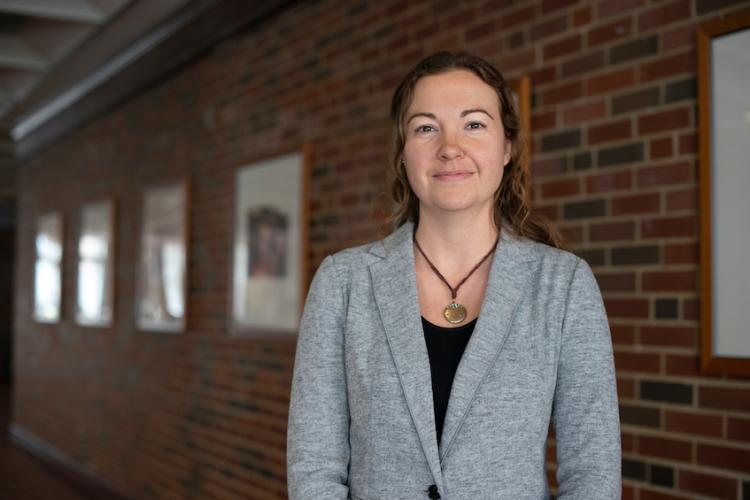
OHIO researcher collaborates to find COVID-19 vaccine hesitancy linked to race and political affiliation characteristics

An Ohio University researcher analyzing the attitudes and hesitancy surrounding COVID-19 vaccine acceptance has found that race and political affiliation were key demographic indicators for vaccine hesitancy.
Berkeley Franz, Ph.D., Osteopathic Heritage Foundation Ralph S. Licklider, D.O., Endowed Faculty Fellow in Population Health Science and associate professor in the Heritage College of Osteopathic Medicine, collaborated with former OHIO professor Lindsay Dhanani, Ph.D., now a professor at the School of Management and Labor Relations at Rutgers University, to publish the paper, “A meta-analysis of COVID-19 vaccine attitudes and demographic characteristics in the United States” in Public Health. Their meta-analysis looked at 46 previous research studies on COVID-19 vaccine attitudes to estimate the overall rate of vaccine acceptance and differences based on demographics such as race and ethnicity, age, income, education, location and political affiliation.
“The benefit of using a meta-analysis is that we could calculate vaccine acceptance across a number of studies to get a much more comprehensive understanding of vaccine attitudes during this time period and across different subgroups,” Franz explained. “This information is invaluable for informing public health campaigns because we can understand the types of tailored strategies that will be necessary to reach different demographic groups and increase vaccine acceptance.”
Across the 46 samples, the researchers found that an average of 61 percent of participants indicated they were willing to receive the COVID-19 vaccine, with the biggest demographic differences found for race and political affiliation. According to the paper, Black respondents and Republicans reported significantly higher vaccine hesitancy than White respondents and Democrats.
“Looking at the data we found and making inferences based on historical context, Black Americans have dealt with medical mistreatment and restricted access for years, which could add to the hesitation of getting the vaccine,” Dhanani said. “Whether it’s not having access to vaccine clinics, working jobs that don’t allow for time off to get the vaccine, or any recovery involved, Black Americans have a tumultuous history with access to health care.”
According to Franz, when looking at the actual vaccination rates compared with who said they intended to get vaccinated, the researchers found women were less likely to say they intended to get the vaccine even though women were more likely to actually get the vaccine.
“We approached this from the lens of equity,” Dhanani said. “We want to know how we can reduce any health disparities in the rollout of the vaccine. The driving force is to identify where the inequity is and how we can help mitigate it.”
The research is also related to previous studies Franz has done, such as looking at the link between racial/ethnic disparities and COVID-19 deaths.
“Going forward, we are looking at where people would prefer to get vaccinated, knowing that factors like location are important in determining if people would be more willing to go there and get the vaccine,” Franz said.
Both Dhanani and Franz are interested in using this information to develop interventions and test whether different messaging works. Their goal is to help influence campaigns to improve vaccine rates and the health of vulnerable populations who have suffered disproportionately from poor COVID-19 outcomes.
This study was inspired by the COVID-19 Vaccination Uptake Behavioral Science Task Force, which Dhanani and Franz served on. It was initially convened to present findings on vaccine hesitancy to the Center for Medicare and Medicaid Services (CMS), Center for Clinical Standards and Quality in the Department of Health and Human Services on Feb. 4, 2021.
